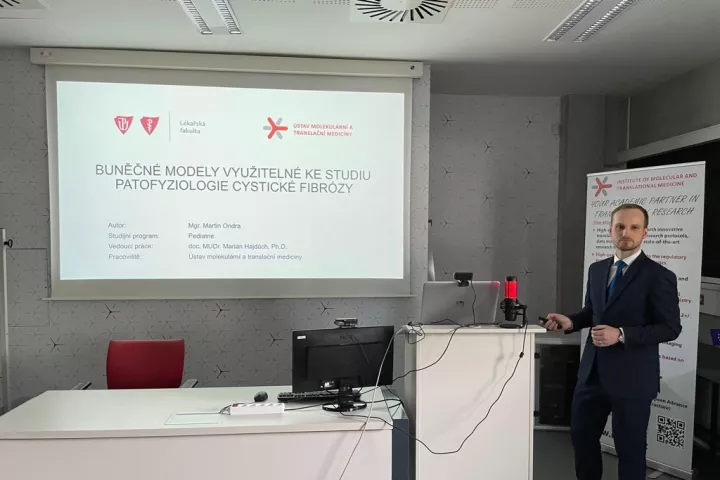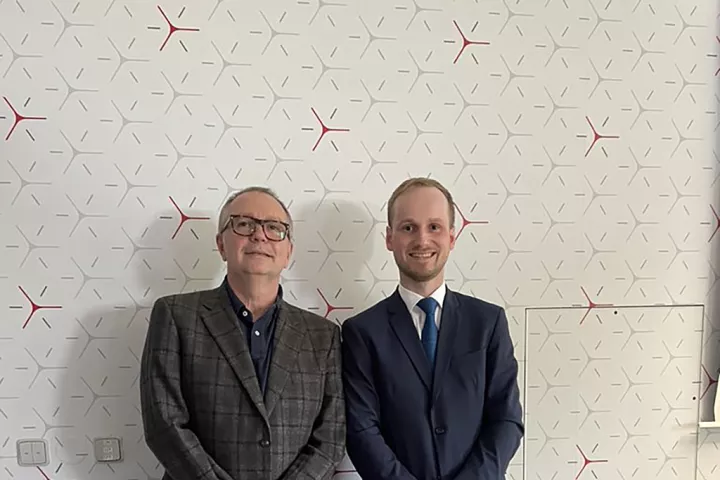Congratulations to Martin Ondra on successfully defending his PhD dissertation titled "Cell Models to Study Pathophysiology of Cystic Fibrosis"! Under the guidance of Scientific Supervisor Marián Hajdúch, the PhD defence took place on May 6, 2024 at IMTM. Wishing Martin continued success in his future endeavors in scientific research!
Abstract:
Cystic fibrosis transmembrane conductance regulator (CFTR) is a membrane protein that functions as an ion channel. Mutations that disrupt its biosynthesis, trafficking, or function cause cystic fibrosis (CF). The theoretical part provides an introduction to CF with a specific focus on available systems for detection of CFTR function or CFTR protein, and for monitoring the activity of professional phagocytes, which play a significant role in the inflammation accompanying this disease. The first section of the experimental part of this thesis describes the development and validation of a new in vitro system for CFTR protein detection. In this model, a HiBiT tag is inserted into the 4th extracellular loop of endogenously expressed CFTR (WT-CFTR) using CRISPR/Cas9 genome editing to enable the detection of CFTR in the plasma membrane of live cells. In summary, a novel reporter cell line has been established and validated with the potential to be used as a building block for the development of unique CF cell models using CRISPR-mediated insertion of CFTR-causing mutations. In addition, this optimized CRISPR/Cas9 mediated HiBiT tag insertion design can be further used to label mutant CFTR in diverse cell lines. The second part describes the development and validation of a new method suitable for monitoring macrophage phagocytic activity mediated by the mannose receptor (MR) CD206, whose expression is often reduced in CF patients. The principle of this innovative method is based on the detection of internalization of fluorescent nanodiamonds (FNDs) with a special surface architecture displaying polyvalent mannose. In vitro experiments showed a significant increase in the internalization of mannosylated FNDs when compared to non-mannosylated FNDs, while at the same time no significant toxicity was observed for both particles. The specific involvement of MR was confirmed by blocking MR with mannan and anti-MR antibody. In conclusion, it is important to emphasize the utility of newly developed innovative methods and model systems for a better understanding of processes during CF progression, or even for the discovery of new CFTR modulators or substances suppressing inflammation.
View Martin's full dissertation on theses.cz.
Photo: Martin Ondra


